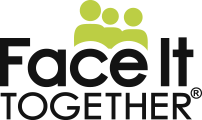Taking aim at addiction: Six steps for employers
June 10, 2019

As an employer, there are steps you can take to help your employees and their loved ones get well, improve productivity and reduce costs and risks related to addiction.
1. Focus on loved ones.
For every person with addiction, many others in their immediate circle are heavily burdened with its effects. This is probably the single largest impact on employers due to the sheer number of people and the consequences on productivity and absenteeism in the workplace. Employers committed to addressing addiction need to send the message to their team members that an open dialogue on these issues, and their impact on family members, is a company priority. In addition, look to your benefits providers and verify the support they offer extends to family members as well.
2. Ensure clear and consistent workplace policies.
Review your policies and procedures to determine if they’re proactive and aligned with a supportive approach to addiction wellness. For example, if your company utilizes drug testing, consider alternatives to automatic dismissal the first time an employee tests positive. It might be more effective to offer an employee treatment, peer coaching or counseling as a mandatory alternative to termination. Other areas worth reviewing are your disability or leave policies for inpatient addiction treatment and the option to take time off to care for family members who may be impacted by the disease.
3. Offer access to high-quality, long-term support.
When it comes to overcoming addiction, a connection to effective, longterm support is the best predictor of recovery success. Addiction needs to be treated as a chronic disease, not something that can be cured in 30 days. Many employers offer employee assistance programs (EAPs) and cover addiction treatment as part of their health insurance plans, but these are usually short-term in nature. A more comprehensive approach would include an option for extended support such as peer coaching. This type of support is more flexible and less disruptive to work and family life, and when delivered over the long-term, can help those affected develop the skills to successfully manage the disease over a lifetime.
4. Partner effectively with your benefits providers.
Your health insurance provider, EAP and other benefits providers need to be at the table with you. They should understand your company’s commitment to supporting employees impacted by addiction and ensure their offerings are in sync with that approach. Be sure to review your coverage of addiction care, including medication-assisted treatment for opioid addiction. In addition, ask your EAP to provide information about their referral process and make sure the treatment programs in their network can demonstrate positive outcomes.
5. Commit to communication.
Motivating affected employees to seek help for addiction is not a “one and done” effort. It will take consistent, repeated messages in a number of forums to begin making inroads. Consider a mix of approaches including CEO videos, direct mail, safety talks, lunch-n-learns and even mobile messaging to lay the groundwork for success. Your employees need to hear the message from people at all levels of your company.
6. Champion culture change.
Stigma is a powerful deterrent to seeking help, and many people fear repercussions at work. The goal is to create a culture where your employees rally in support when someone is affected by addiction, just as if they were facing cancer or another serious illness. The leadership at the top sets the tone. The CEO and other senior managers should send the message that addiction is health issue, getting help is OK and there’s no shame in seeking support.
View our full guide for employers here.
